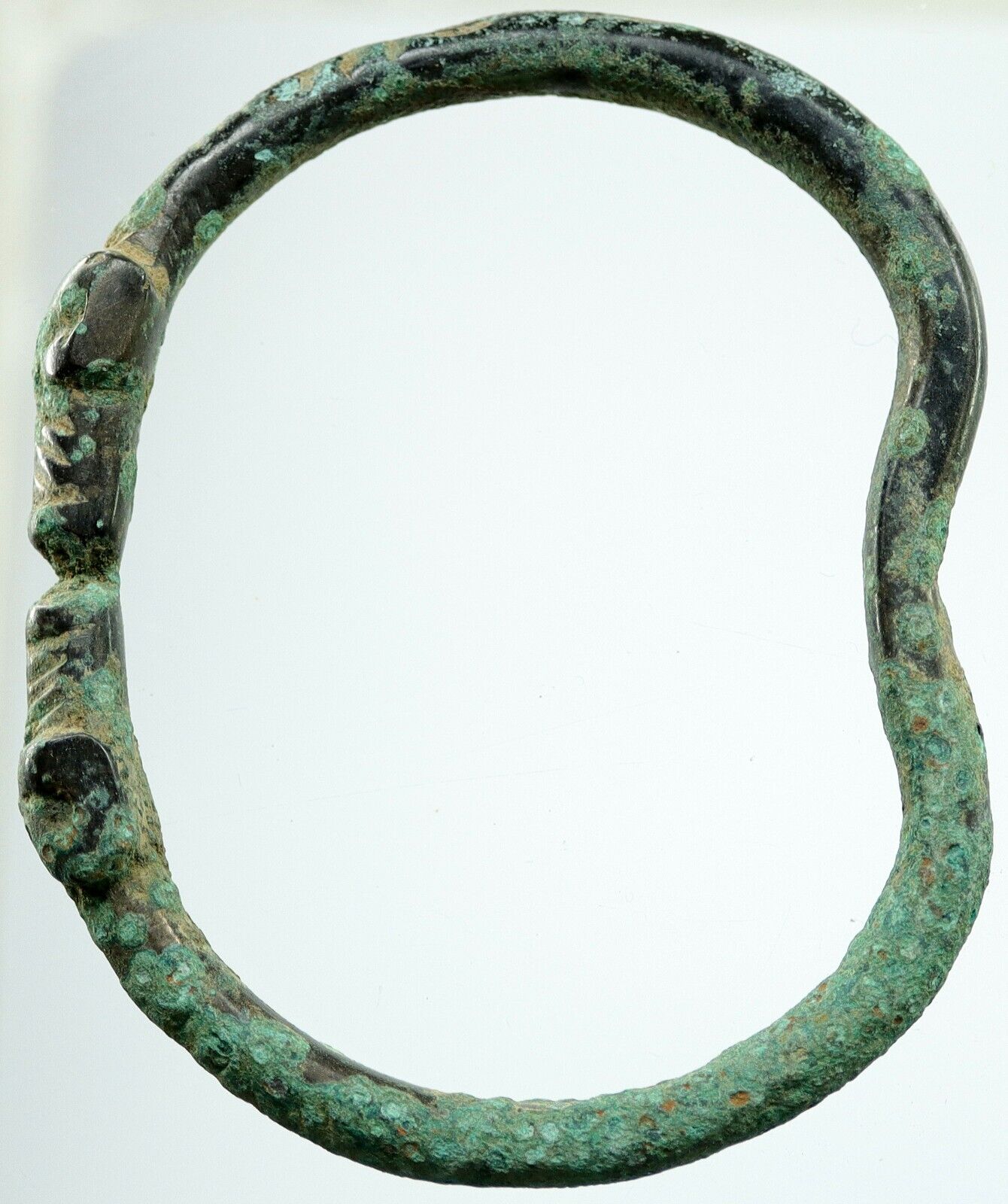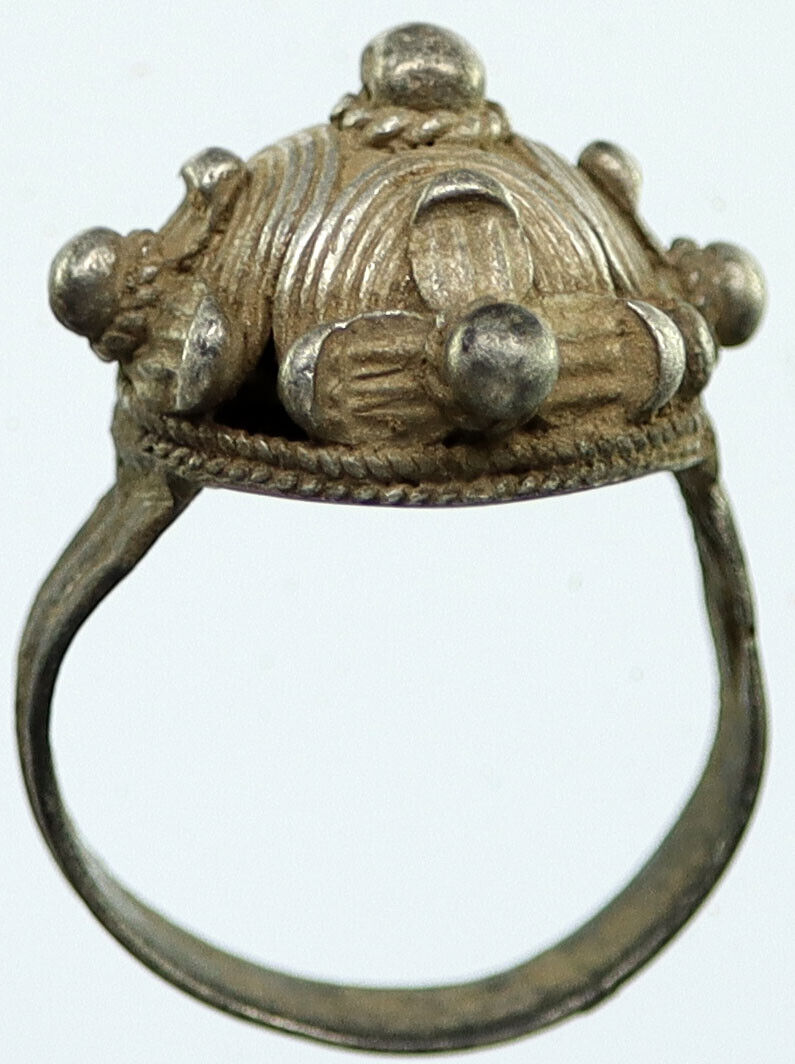|
Kushan Artifact
Dioscuri Twins Incense Caps
200-400 AD
| Weight: 23.48 grams | 22mm x 38mm with setting.| Material: Silver |
This is a very rare incense cap invoking the Dioscuri twins.
Provenance: From private collection in the United States of America.
Ownership History: From private collection in the United States, bought in private sale in the United States of America.
You are bidding on the exact item pictured, provided with a Certificate of Authenticity and Lifetime Guarantee of Authenticity.
The Dioscuri, the twins of Zeus, Castor and Pollux, are worshipped by the Greeks and Romans (5th century BC onwards) alike. They can be recognized by the skull-cap they wear and they can be seen in the early Da Yuezhi coinage of the Kushan dynasty. Both Dioscuri were excellent horsemen and hunters. Castor and Pollux are the twins of the Gemini constellation and are regarded as the patrons of the sailors.
![A map of India in the 2nd century AD showing the extent of the Kushan Empire (in yellow) during the reign of Kanishka. Most historians consider the empire to have variously extended as far east as the middle Ganges plain,[1] to Varanasi on the confluence of the Ganges and the Jumna,[2][3] or probably even Pataliputra.[4][5]](https://upload.wikimedia.org/wikipedia/commons/thumb/d/d8/Kushan_Empire_(highlighted).jpg/270px-Kushan_Empire_(highlighted).jpg) The Kushan Empire was a syncretic empire, formed by the Yuezhi, in the Bactrian territories in the early 1st century. It spread to encompass much of modern-day territory of Afghanistan, Pakistan, Nepal and northern India, at least as far as Saketa and Sarnath near Varanasi (Benares), where inscriptions have been found dating to the era of the Kushan Emperor Kanishka the Great. The Kushan Empire was a syncretic empire, formed by the Yuezhi, in the Bactrian territories in the early 1st century. It spread to encompass much of modern-day territory of Afghanistan, Pakistan, Nepal and northern India, at least as far as Saketa and Sarnath near Varanasi (Benares), where inscriptions have been found dating to the era of the Kushan Emperor Kanishka the Great.
The Kushans were most probably one of five branches of the Yuezhi confederation, an Indo-European nomadic people of possible Tocharian origin, who migrated from northwestern China (Xinjiang and Gansu) and settled in ancient Bactria. The founder of the dynasty, Kujula Kadphises, followed Greek religious ideas and iconography after the Greco-Bactrian tradition, and also followed traditions of Hinduism, being a devotee of the Hindu God Shiva. The Kushans in general were also great patrons of Buddhism, and, starting with Emperor Kanishka, they also employed elements of Zoroastrianism in their pantheon. They played an important role in the spread of Buddhism to Central Asia and China.
The Kushans possibly used the Greek language initially for administrative purposes, but soon began to use the Bactrian language. Kanishka sent his armies north of the Karakoram mountains. A direct road from Gandhara to China remained under Kushan control for more than a century, encouraging travel across the Karakoram and facilitating the spread of Mahayana Buddhism to China. The Kushan dynasty had diplomatic contacts with the Roman Empire, Sasanian Persia, the Aksumite Empire and the Han dynasty of China. The Kushan Empire was at the center of trade relations between the Roman Empire and China: according to Alain Daniélou, “for a time, the Kushana Empire was the centerpoint of the major civilizations”. While much philosophy, art, and science was created within its borders, the only textual record of the empire’s history today comes from inscriptions and accounts in other languages, particularly Chinese.
The Kushan Empire fragmented into semi-independent kingdoms in the 3rd century AD, which fell to the Sasanians invading from the west, establishing the Kushano-Sasanian Kingdom in the areas of Sogdiana, Bactria and Gandhara. In the 4th century, the Guptas, an Indian dynasty also pressed from the east. The last of the Kushan and Kushano-Sasanian kingdoms were eventually overwhelmed by invaders from the north, known as the Kidarites, and then the Hephthalites.
|





![A map of India in the 2nd century AD showing the extent of the Kushan Empire (in yellow) during the reign of Kanishka. Most historians consider the empire to have variously extended as far east as the middle Ganges plain,[1] to Varanasi on the confluence of the Ganges and the Jumna,[2][3] or probably even Pataliputra.[4][5]](https://upload.wikimedia.org/wikipedia/commons/thumb/d/d8/Kushan_Empire_(highlighted).jpg/270px-Kushan_Empire_(highlighted).jpg) The Kushan Empire was a syncretic empire, formed by the Yuezhi, in the Bactrian territories in the early 1st century. It spread to encompass much of modern-day territory of Afghanistan, Pakistan, Nepal and northern India, at least as far as Saketa and Sarnath near Varanasi (Benares), where inscriptions have been found dating to the era of the Kushan Emperor Kanishka the Great.
The Kushan Empire was a syncretic empire, formed by the Yuezhi, in the Bactrian territories in the early 1st century. It spread to encompass much of modern-day territory of Afghanistan, Pakistan, Nepal and northern India, at least as far as Saketa and Sarnath near Varanasi (Benares), where inscriptions have been found dating to the era of the Kushan Emperor Kanishka the Great. 




